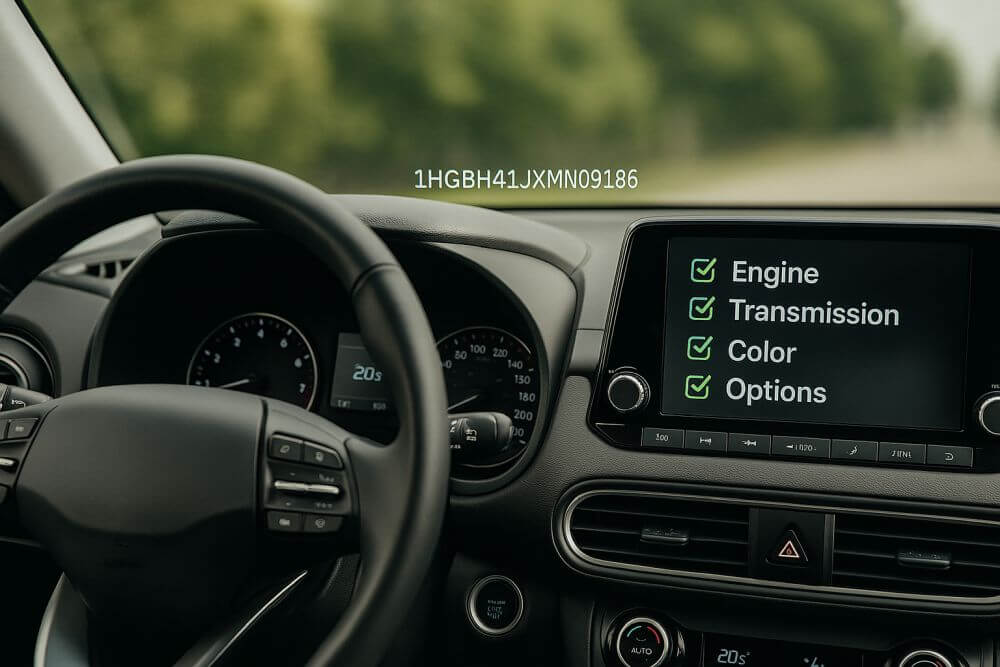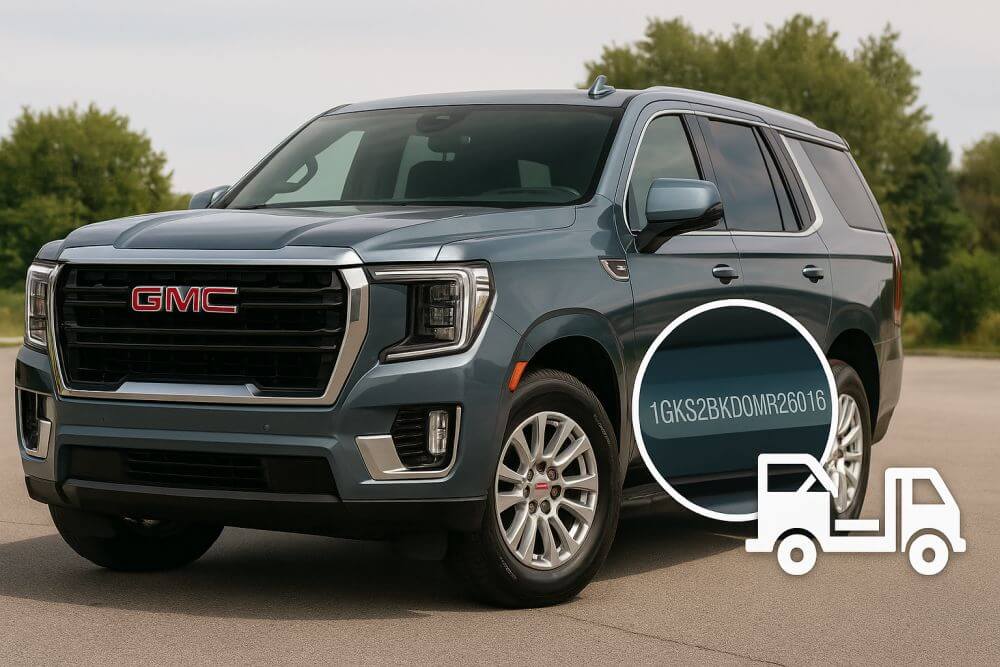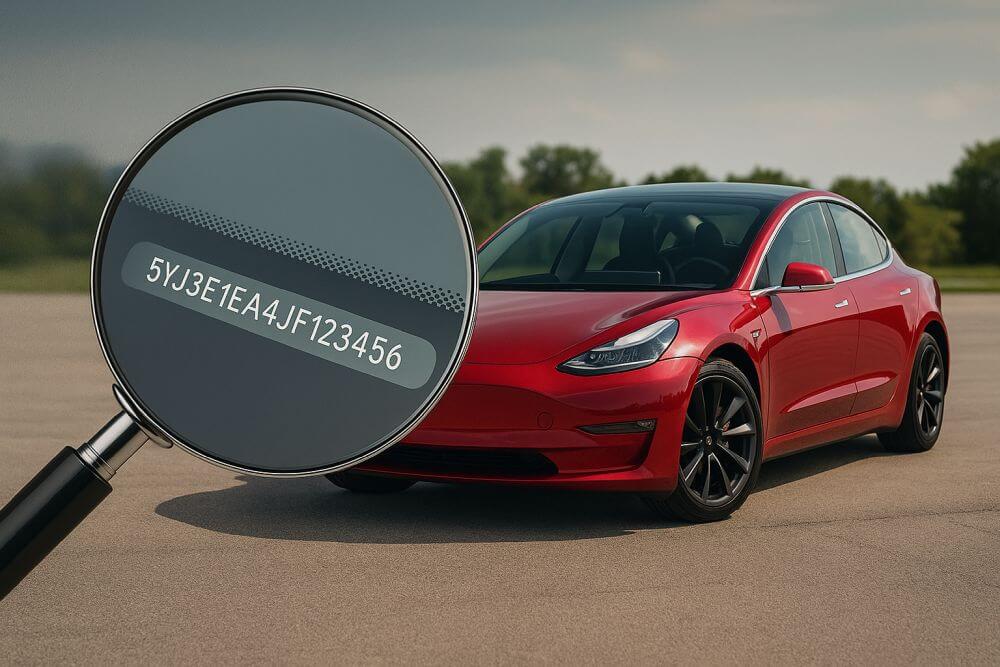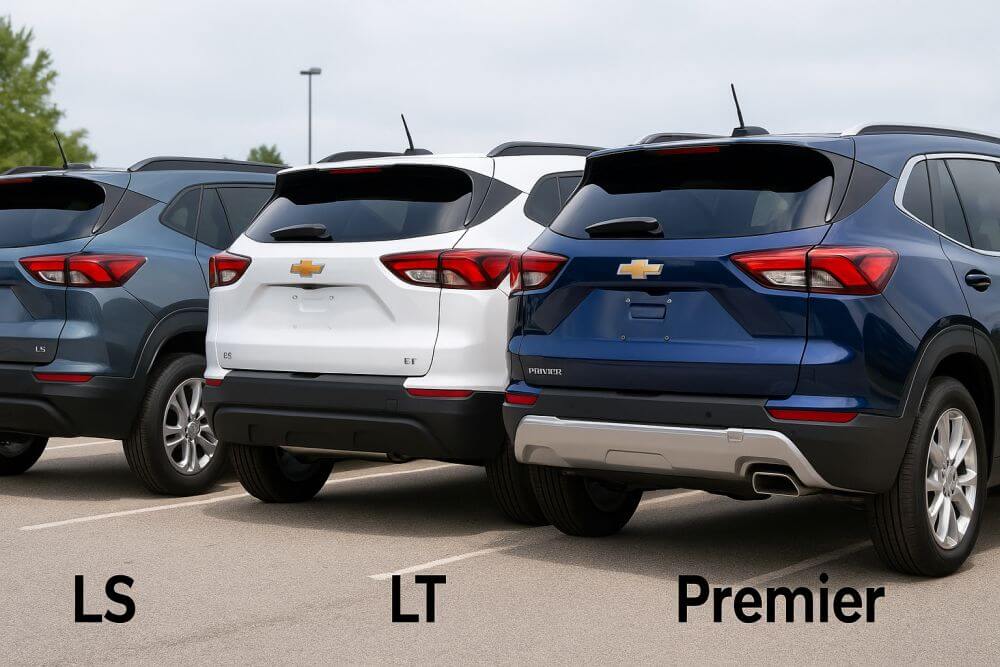Shopping for a used car? Whether you’re browsing online or talking with a private seller, getting the full story about a vehicle’s features is crucial. But here’s the catch: listings often leave out key details — or worse, include inaccurate information. And unless you want to drive around town asking dealers to print window stickers, you’re stuck guessing.

There’s a better way. With one simple code — the Vehicle Identification Number (VIN) — you can unlock every factory detail about a car, truck, or SUV. No salespeople. No pressure. Just clear, verified info that helps you make smart decisions.
What Is a VIN, and Why Does It Matter?
A VIN is a 17-character code assigned to every vehicle at the factory. It’s like a digital fingerprint that records the car’s origin, engine type, trim level, safety features, and more. You’ll find the VIN:
- On the dashboard near the windshield
- Inside the driver’s door frame
- On registration, insurance, or title documents
The VIN doesn’t just help identify a car. It’s the key to decoding the full factory specs.
Why Specs Matter (Especially for Used Cars)
You might assume that a “Toyota Camry SE” is always the same — but trim levels can vary widely. And some sellers use misleading info to make a base model seem like a fully loaded one.
Knowing the exact specs can help you:
- Avoid overpaying for a car with fewer features
- Compare vehicles accurately by trim and package
- Choose the best option for your needs (e.g., AWD vs. FWD)
- Understand what’s included before test driving or financing
Use Our Vehicle Specs by VIN Tool to Uncover Factory Details Instantly
With just a VIN, you can run a fast, free search that returns:
- Make, model, year, and trim level
- Engine and transmission type
- Drivetrain (FWD, AWD, RWD)
- Fuel type and tank capacity
- Exterior and interior color
- Towing capacity (if applicable)
- Safety and driver-assist features
- Infotainment and tech options
- Wheel and tire specs
🔍 Use our Vehicle Specs by VIN tool to uncover factory details instantly
No more guessing. No more relying on what the ad says. Just clean, accurate data — pulled directly from manufacturer and vehicle registry sources.
How to Check Vehicle Specs Using a VIN (Step-by-Step)
It’s easier than you might think:
Step 1: Locate the VIN
Check the driver-side dashboard near the windshield or the inside of the driver’s door frame. You can also find the VIN on a vehicle’s insurance or registration paperwork.
Step 2: Go to the Vehicle Specs Tool
Visit our free VIN decoder page at VinCheckPro:
👉 https://www.vincheckpro.com/vehicle-specs-by-vin/
Step 3: Enter the VIN
Paste the full 17-digit code into the search field and hit “Check Now.”
Step 4: Review the Vehicle Report
You’ll get an instant breakdown of the vehicle’s original factory configuration, including safety tech, drivetrain, engine, features, and more.
Real-World Scenarios Where VIN Specs Save the Day
1. Buying Online or Out of State
Before flying across the country to pick up your “fully loaded” SUV, run the VIN. You might find it’s missing key features like a moonroof, navigation, or heated seats.
2. Comparing Two Similar Vehicles
A 2021 Honda CR-V EX and a 2021 CR-V Touring may look alike — but the Touring includes advanced safety, premium audio, and AWD. A VIN lookup confirms exactly what’s included.
3. Checking Towing or Payload Capacity
Looking at a truck or SUV for towing? VIN specs show engine size, gear ratios, and whether it includes a towing package.
4. Selling Your Own Car
Want to stand out in a crowded marketplace? Include VIN-verified specs in your listing to build trust and attract serious buyers.
What If the Seller Refuses to Share the VIN?
That’s a red flag. A legitimate seller should have no problem sharing the VIN. If they’re hesitant, they might be hiding a branded title, accident history, or incorrect listing details.
What Specs Can’t the VIN Tell You?
While a VIN lookup gives you a deep factory snapshot, it won’t include:
- Aftermarket modifications (e.g., lift kits, rims, or new stereos)
- Maintenance records or service history
- Wear and tear (tires, brakes, etc.)
- Accident or insurance history (unless paired with a full history report)
Still, VIN specs form the foundation for smart decision-making.
Frequently Asked Questions
What if the VIN is shorter than 17 digits?
Older vehicles (pre-1981) used shorter VINs. Most VIN lookup tools focus on 17-digit standardized VINs from 1981 and newer.
Can I run a VIN check on a motorcycle or RV?
Yes! As long as the vehicle has a 17-digit VIN, you can decode its specs — including for bikes, campers, and trailers.
Are VIN specs free to access?
Yes. VinCheckPro’s tool provides a free vehicle spec report based on VIN. Premium history reports are optional.
Do VIN specs match what’s on the window sticker?
Yes — VIN spec tools decode the same information printed on a new vehicle’s original Monroney sticker (minus pricing).
What if the VIN doesn’t return any results?
Double-check for typos or missing characters. If it’s still not working, the vehicle may be too new, too old, or not yet registered in public databases.
Final Thoughts
If you’re serious about buying (or selling) a vehicle, knowing the specs isn’t optional — it’s essential. Don’t rely on vague listings or the seller’s memory. Use the VIN to uncover exactly what’s under the hood, what’s inside the cabin, and what makes that vehicle unique.
Whether you’re comparing trims, checking towing capacity, or confirming safety features, a VIN lookup gives you the facts — instantly and for free.
✅ Use our Vehicle Specs by VIN tool to uncover factory details instantly
Make your next car decision the right one — starting with the VIN.


